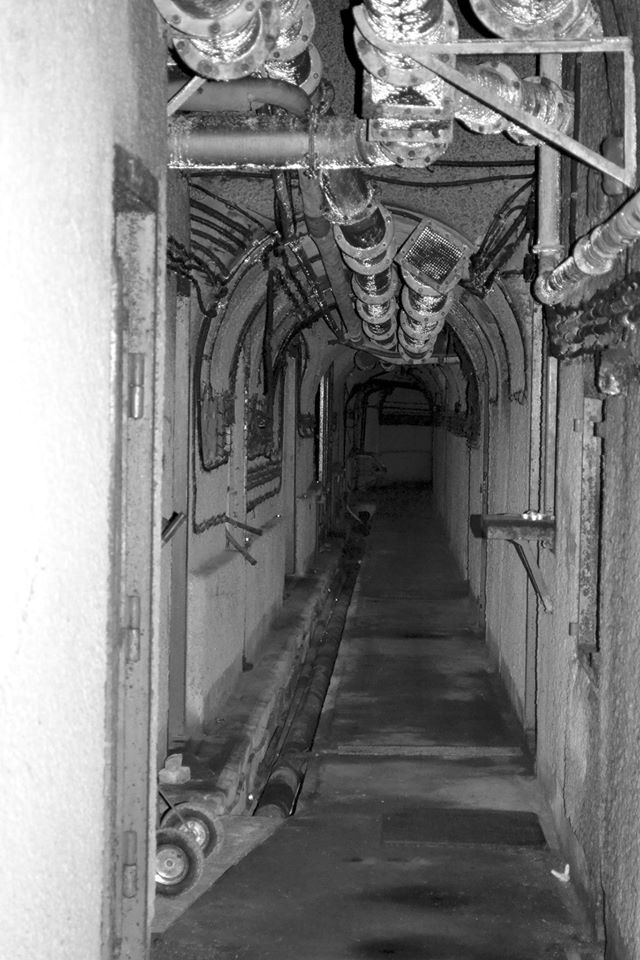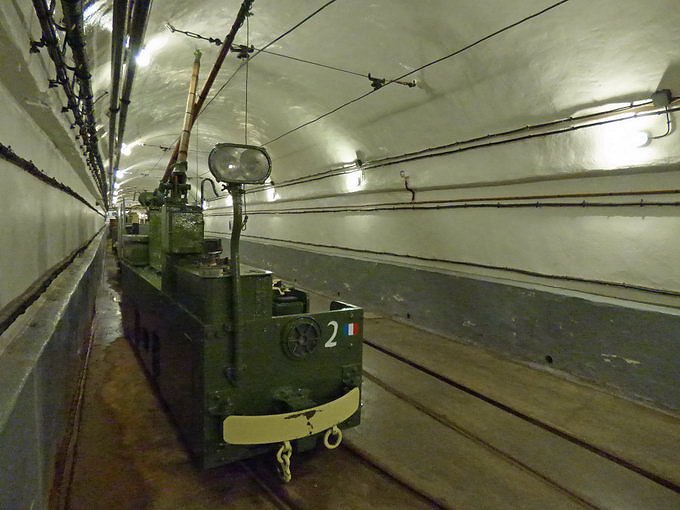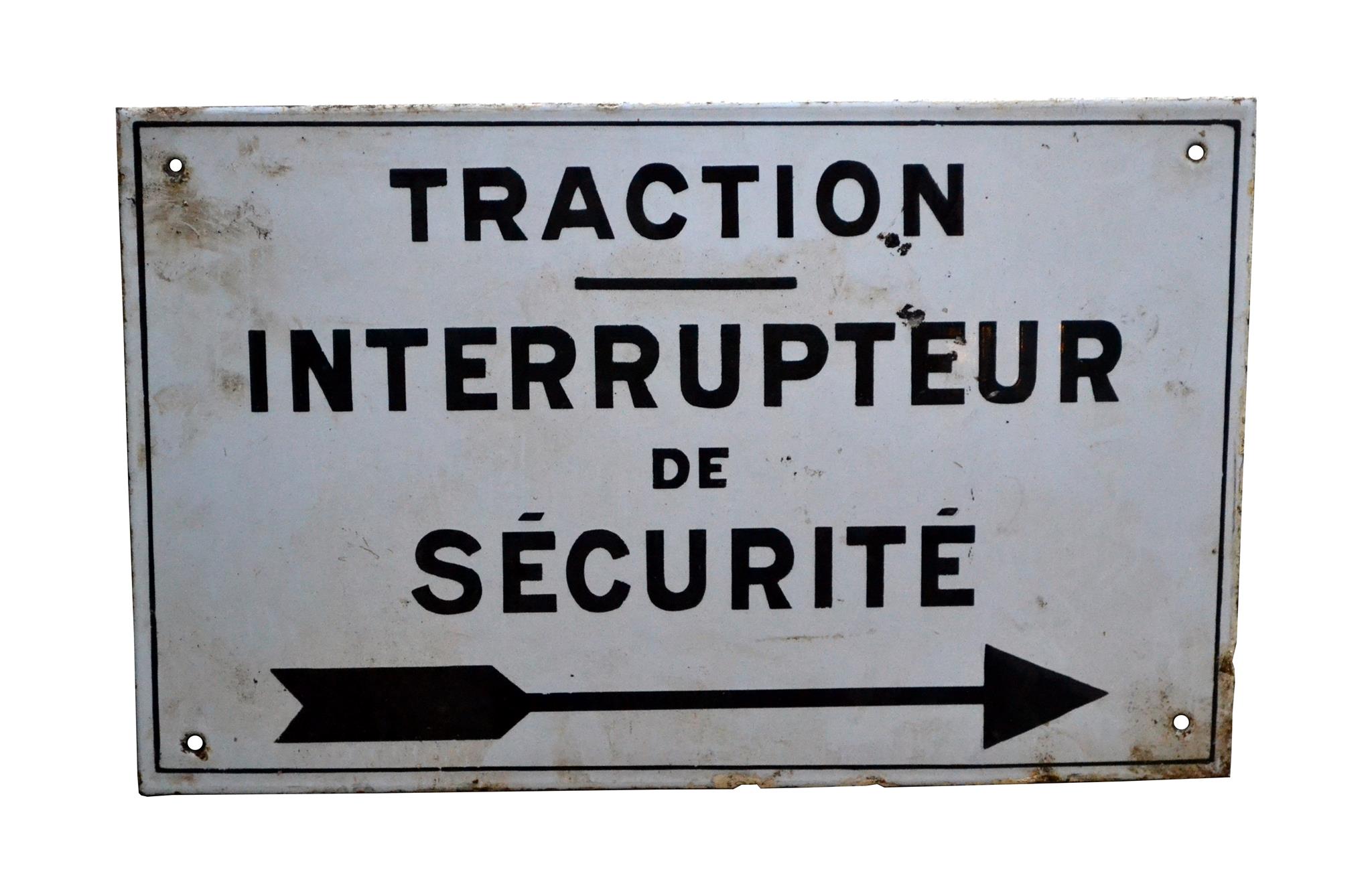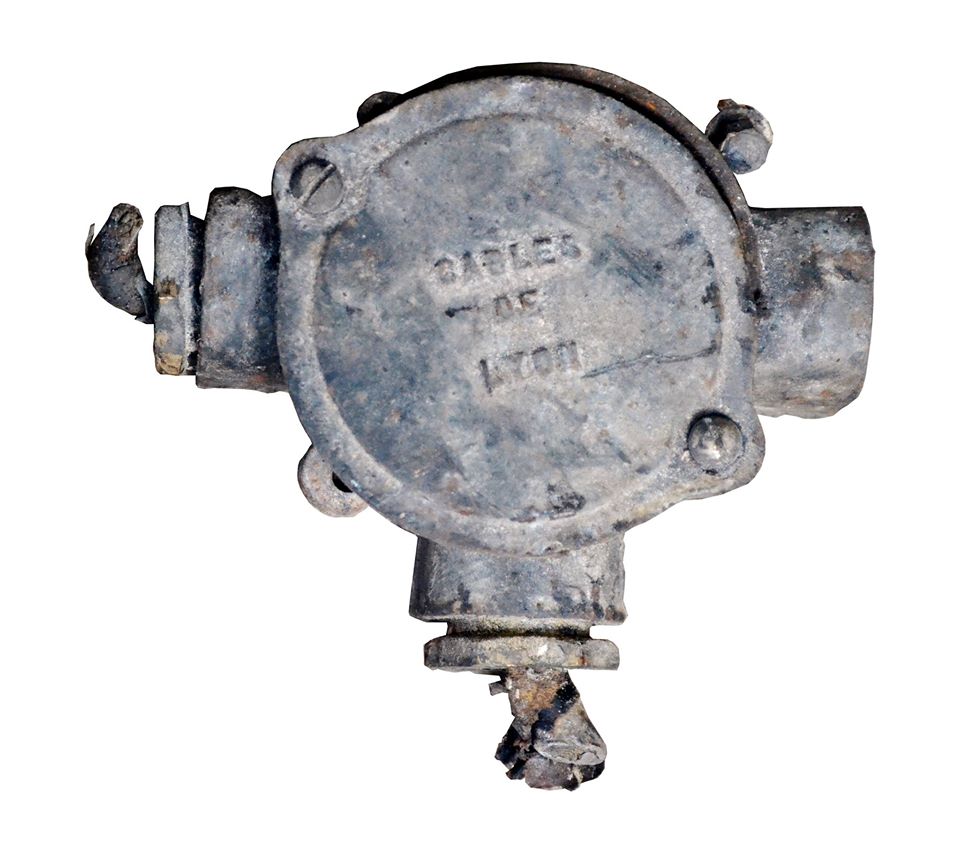

Firstly, we should point out that the galleries connecting the various parts of the forts were not as well-lit as they are for tourists today. Where the fort was provided with an electrically-powered rail system, the galleries, while provided with lighting, were lit extremely sparsely. Because the galleries were the principal domain of the train there was little requirement to provide much lighting. Troops were confined to the locations at which they were stationed; eating, living and fighting where they were posted. Only the fort's Commanding Officer, Doctor and Postman had unlimited freedom to move around the entire site. Below the floor of the galleries ran the drains. Water ingress was a constant issue to be dealt with, as was the removal waste generated by the soldiers. Air was moved via ducting along the ceiling of the galleries and electricity and communication cables ran along the walls. Rather than crews having to carry reels of cable to carry out repairs, all cables were forced through a loop on the walls, thus building in spares that could be cut and spliced to effect any repairs needed.

Emergency Stop For The Train's Electrical Supply. Trains have the potential to fall off their tracks, for any number of reasons. In the event of an accident it was important to be able to isolate the electrical supply, especially if the accident were to cause the overhead 600v cable to come down. This is a rare item. Not every fort had electrically-powered trains and even where the trains were used there would be a limited number of these installed.



Bulkhead Light. At first glance, there is nothing really special about this item. Today it is still possible to purchase modern versions! However, this is a genuine bulkhead light, complete with its original incandescent bulb. What makes this example stand out is that the glass is still intact. Sadly, unauthorised visitors to the Line today care little for the original fixtures and fittings and glass tends to attract vandals as moths to flames. What we should also make clear is that the glass was equally doomed to destruction from the moment it was fitted. In order to seal the glass, for some reason, plaster was used (one assumes it was a cheaper option than rubber); as the forts fell into disrepair, moisture caused the plaster to expand, which at the very least would crack the glass.


Electrical Junction Box. Like the light switch, surface-mounted. As can be seen, it remains wired (internally) from when it was initially installed.
